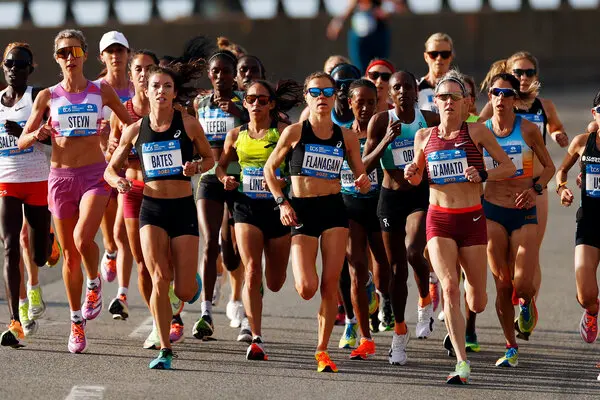By: Grace Gao
In the month before the biggest track and field event of the year, competitive runners all over the world have been busying themselves, setting new records, and pushing against their limits.
Why have times improved so much? Some look towards the constantly evolving technology in the innovation of running shoes. Since the birth of running footwear in 1865, running shoes have continued to develop to aid the wearer in making their best times.
Over centuries of evolution, running shoes have improved vastly. The earliest developments took place in 1894 when spikes placed on the forefront of shoes made running on uneven terrain more smooth. After Adidas was founded in 1948, shoe companies prioritized making shoes as light as possible until Adolf Dassler created a lightweight shoe in 1964 that helped American high schooler, Jim Ryun, break four minutes in the mile run. (TimeToast)
After Nike released non-spiked running shoes in 1974, shoe developments slowed for the next few decades as shoe companies raced to mass-produce running shoes. Then, in 2018, Nike experimented with carbon fiber to make the soles of their shoes spring-loaded and light. After the success of carbon fiber in the soles of running shoes, Nike decided to expand the possibilities of carbon fiber by creating carbon fiber track spikes. (TimeToast)
Now, in 2023, running shoes have reached a Golden Age. With newly developed midsole plates, springy “super shoes” have revolutionized running with their higher rebound energy that allows racers to run more efficiently.
However, scientists believe it is not these super shoes but the “super training” athletes endure that has led to the record-breaking times this season. Many sports scientists believe that for a runner to be at their best during a competition, they must train under the same conditions as when they race.
U.S. physiologist and biomechanics expert Geoff Burns said, “Because the shoes are a new tool, the more we run in them, the better we adapt.” (NYT Times)
Top athletes find it hard to resist racing and training in super shoes. One of the three U.S. women running in the World Championship, Lindsay Flanagan, felt that training in super shoes helped her run more efficiently with more quality days and mileage than fellow racers who preferred traditional shoes. Flanagan said, “Since I’m going to be wearing super shoes in races, I want to get a good feel for them in training. I’ve found that I can log more quality days, as well as more mileage in general because my legs come around sooner.” (NYT Times)
In the history of running, we’ve improved our times through new developments in running shoes and the latest developments in technology, but this year, we credit our top times to super training.











